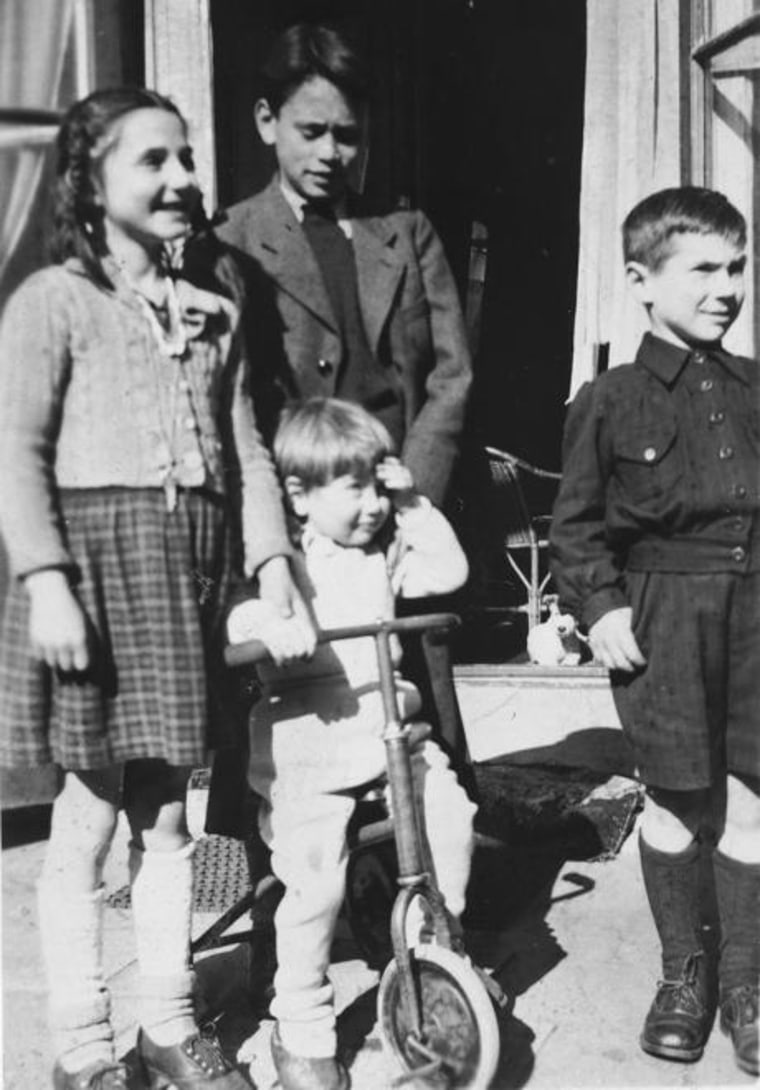Al Münzer survived the Nazi occupation by hiding with a Dutch Indonesian family in the Netherlands. Josie Traum was hidden in Belgium at the age of 3 after her mother made the agonizing decision to send her away at the start of World War II without knowing where she would end up. Irene Weiss and her sister were the only members of their family to survive Auschwitz.
Münzer, Traum and Weiss are in a high-risk group for Covid-19 because of their age. That means the Holocaust remembrance events and oral history recordings they participated in, like so much in the past year of the pandemic, had to be virtual. The thought of skipping a year of documenting Holocaust testimonies was never an option — time is of the essence.
“If we didn't have Zoom, this thing has lasted a year, there would have been silence for a whole year about the Holocaust,” Weiss said, “and that's unimaginable, because a year of silence is very difficult to revise.”
All three are active volunteers in the U.S. Holocaust Memorial Museum in Washington and have each shared their personal testimonies with a number of live audiences. Throughout the pandemic, they have used virtual platforms to continue sharing their stories and engaging with the museum. However, all of them prefer the in-person experience.
“There is more of an emotional feedback that I get from the audience when I do it in person,” Münzer said. “It's very, very hard to gauge what your audience is feeling when speaking remotely.”
He pointed to an example after one event about two years ago. After a talk at Old Dominion University in Norfolk, Virginia, a man approached him with tears in his eyes and said, “I am a young father and have a 1-year-old daughter. Who will tell her your story when she grows up?” He then asked Al to write a letter to his daughter so she could read it in the future.

This interaction prompted Al to write “Letter to Olivia,” which has been published by the Holocaust Museum.
“That kind of thing really cannot happen remotely,” Münzer said. “It really is the kind of thing that happens in person, and of course, it is extremely heartwarming to meet people like that man.”
While in-person interactions with strangers who hear Münzer’s testimony have been powerful, expansive access to the virtual world led Münzer to a meaningful reunion.
When Münzer speaks, he shows his audience a photograph to illustrate that he was never able to leave the house while in hiding. The photo shows two little kids who used to come and play with him. He was never able to find their names or identities because he was too young during the war to remember.
This past year, one of the little boys in that photograph, Arthur Friederizi, who was about 6 at the time, was able to connect with Münzer more than 75 years after the end of the war. Friederizi recognized the picture of Münzer when it was included in a Dutch newspaper article on a book about the Indonesian Dutch resistance movement during the Nazi occupation of the Netherlands.
“He remembered the little Jewish boy he used to play with and he managed to contact me. We have been exchanging emails almost every week ever since then,” Münzer said.
The U.S. Holocaust Memorial Museum’s Oral History Project has conducted interviews with more than 6,000 people affected by the Holocaust. Münzer, Traum and Weiss each gave their oral histories during the pandemic.
Ina Navazelskis, who has conducted nearly 400 interviews for the project, used to travel around the country to meet with survivors in person. She has now adjusted to using video conferencing from her home.
Navazelskis said that the only downfall of the virtual interviews has been the sometimes poor video quality, but that, in fact, virtual interviews can sometimes be stronger than in-person ones.
“If the interviewee gets tired after two hours and has an appointment or something like that, we can postpone for another day,” Navazelskis said. Her interview with Irene took more than eight hours spread over four days.
One aspect that has remained consistent between virtual and in-person interviews is the emotional toll of sharing these traumatic memories.
“Some of them don't sleep the nights before, some of them don't sleep the nights afterwards. It's raising memories that are not happy memories,” Navazelskis said. “Many of them would be happy to not talk — to go to their graves without having spoken — but their children or their grandchildren, or a sense of duty propels them to share these things.”
When Weiss shares her testimony at the museum, people often go up to her afterward to speak to her and take a picture with her. She believes these types of one-on-one, in-person interactions leave an indelible impression on a listener, ensuring that they will not forget her story.
“You’ll remember this because you looked in my eyes and I looked in yours and we made contact, and you are taking away the memory and the picture,” Weiss said. “With Zoom, yes, people still ask questions, but when the camera goes off, that's it.”
Displays of empathy are also felt more in person than virtually. “There's something about people saying to you ‘I'm so glad I can hear you, I can see you,’ and even touch and hugging, I think that means a lot,” Traum said. “You know people even say to me, ‘I've never thought I would meet a survivor.’”
Regardless of whether it is done virtually or in person, every survivor who shares a story has the same goal: to debunk Holocaust denial, advocate the elimination of hate, and ensure that the Holocaust is never forgotten.
